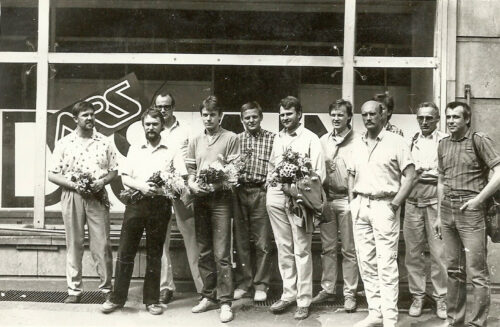Tallinn Art Products Factory design studio [Tallinna Kunstitoodete Kombinaadi disaini ateljee ARS]
Established after the Second World War when several workshops from the 1920s and 30s were nationalised and reorganised under the supervision of the Estonian Artists’ Union, the Tallinn Art Products Factory ARS laid the foundation for the technical and ideological development of design in Soviet Estonia.
Against the backdrop of the Soviet industrialisation programme, the Art Products Factory was pivotal in transforming the position of the applied artist, who now become a key figure in shaping the new environment and everyday life. Standing at the crossroads between art and industry, these artists produced samples for serial handmade production while working in the factory’s various different workshops, including textiles, metal, porcelain painting, and leather; the largest department was decoration, which was responsible for both interior and exhibition design. The focus was less on designing products and more on doing commissioned work.
In 1985, the first design studio, ARSdesign, was founded within the factory by designer Matti Õunapuu, chief artist of ARS, with the task of offering design services to companies and industry. The core group, which included Heikki Zoova, Hugo Mitt, Raimo Sau, and Arvo Pärenson, embodied the vision of a modern team of designers with a multifaceted education, capable of quickly embracing new technologies and developing various alternative solutions to emerging problems. At the end of the decade, the ARS design studio had fifty members. The studio designed industrial prototypes in collaboration with commissioning companies, such as trailer homes for the Tupolev factory in Moscow and an electric fireplace for the Kalinin factory in Tallinn. By the late 1980s, the bureau had received orders from the Finnish company Helkama, including designs for refrigerators and electric stoves.


